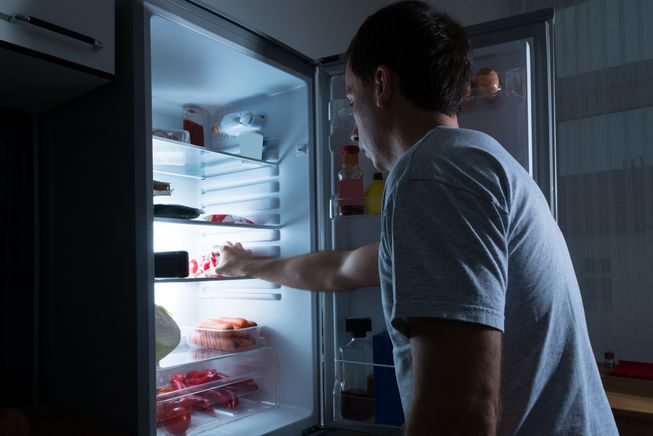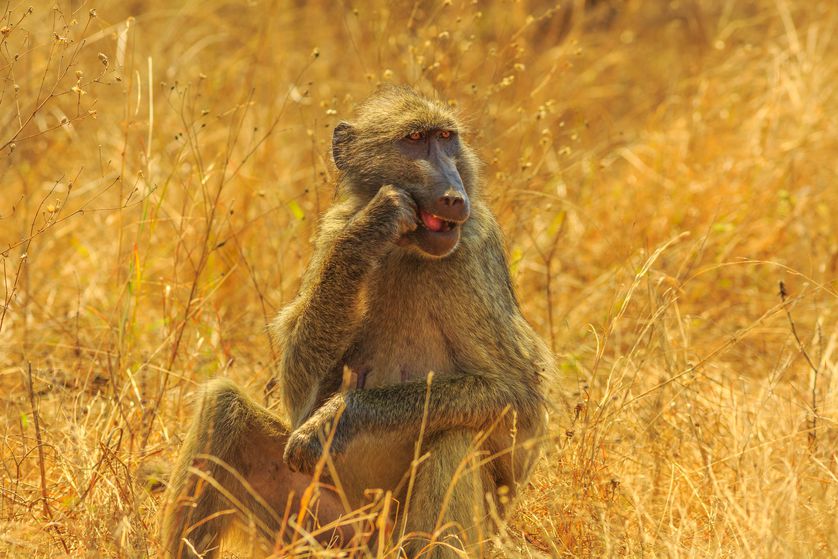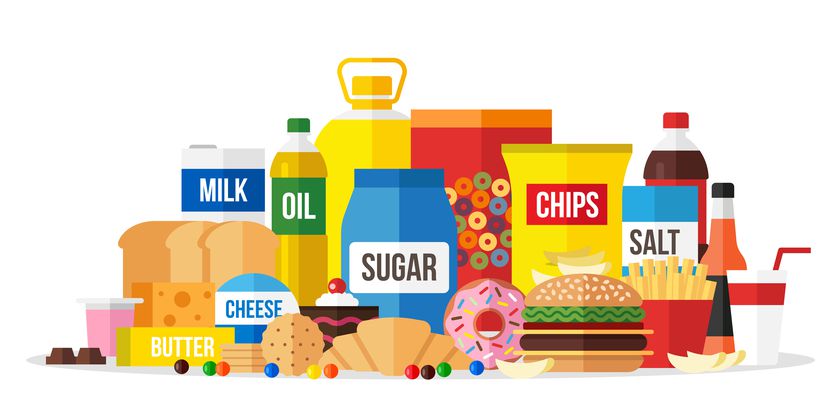博文
[转载]你知道你有5种不同的食欲吗?
|||
Did you know you have 5 different appetites?
你知道你有5种不同的食欲吗?
五种食欲的观点来自David Raubenheimer and Stephen Simpson的新书"Eat Like the Animals: What Nature Teaches Us About the Science of Healthy Eating."为什么是5种而不是更多?可能是更多的话不满足进化论,不利于适应环境,太少则更加不能适应生存。五种食物按照食欲强度由高到低依次是蛋白质,糖类,脂肪,钠,钙
The answer, it seems, is five. Five appetites are sufficient. They drive us to consume the following nutrients: Protein Carbs Fats Sodium Calcium These are the three macronutrients plus two critically important micronutrients. These correspond precisely to the same nutrients that we are able to taste in foods. A most elegant solution to an otherwise impossible challenge. Our appetites have evolved to target specific flavors and guide us to eat only the things we need to survive. Those nutrients (the Big Five) have been singled out by our evolution for special reasons. One is that they are needed in the diet at very specific levels—neither too much nor too little. Another is that the things we eat vary widely in their concentrations of these nutrients—we would, for example, need to eat a lot more rice than steak to get the amount of protein we require. Third, some of these nutrients were so rare in our ancestral environments that we needed dedicated biological machinery to seek them out. For example, sodium and calcium were once so scarce that they were assigned dedicated appetites with their own specific taste receptors—and we are not alone in this. We get the word salary because salt was so prized, it was used in historical times as a monetary currency. Gorillas eat tree bark to get enough salt. Calcium is so prized by giant pandas that it causes them to migrate long distances to get enough to breed.
Raubenheimer, David; Simpson, Stephen. Eat Like the Animals: What Nature Teaches Us About the Science of Healthy Eating (pp. 25-26). HMH Books. Kindle 版本.
When you're hungry, what do you eat? Do you reach for fresh fruits and vegetables or grab chips or ice cream? There's likely no consistent answer. After all, appetite is complicated.
当你饿的时候,你吃什么?你会吃新鲜的水果和蔬菜,或者吃薯片或冰淇淋吗?可能没有一致的答案。毕竟,食欲是复杂的。

Your appetite is a lot more complicated than you thought. (Photo: Andrey_Popov/Shutterstock)
In studying how animals eat, researchers learned about the human diet in the process. They found that humans have five distinct appetites that work together to make sure we get the proper amount of nutrients our bodies need to work efficiently.
在研究动物如何进食的过程中,研究人员了解了人类的饮食。他们发现,人类有五种不同的食欲,它们共同作用,确保我们获得身体有效运作所需的适当数量的营养。
"It is a mistake to think of appetite as a single, powerful drive to eat," researchers David Raubenheimer and Stephen Simpson write in New Scientist. "We need separate appetites to keep track of various nutrients, and hence to construct a balanced diet."
研究人员大卫·劳本海默和史蒂芬·辛普森在《新科学家》杂志上写道:“将食欲视为单一的、强大的进食动力是错误的。”“我们需要不同的食欲来记录各种营养,从而构建一个平衡的饮食。”
The five appetites are for protein, carbs, fats, sodium, and calcium.
这五种食物分别是蛋白质、碳水化合物、脂肪、钠和钙。
"Those five have been singled out by evolution for good reasons," they write. "One is that there is a limit to how complex biological systems can get and still operate efficiently. We couldn't have specific appetites for dozens of nutrients. Another is that these nutrients are needed in very specific quantities. Third, some components, like sodium, were often rare in our ancestral environments and we needed dedicated machinery to seek them out, for example in mineral deposits."
他们写道:“这五种食欲被进化论挑出来是有充分理由的。其中之一是,复杂的生物系统能够达到并仍能有效运行的程度是有限的。我们不能对几十种营养物质都有特定的胃口。另一个原因是,这些营养素的需要量非常具体。第三,有些成分,比如钠,在我们的祖先生活的环境中通常很稀有,我们需要专门的机器来寻找它们,比如在矿藏中。”
Raubenheimer and Simpson discuss the five appetites and what else they learned by studying how nature solves this problem in their new book, "Eat Like the Animals: What Nature Teaches Us About the Science of Healthy Eating."
罗本海默和辛普森在他们的新书《像动物一样吃:自然教我们健康饮食的科学》中讨论了五种食欲以及他们通过研究自然如何解决这个问题而学到的其他知识。

Researchers followed a Cape baboon like this one and recorded everything she ate for 30 days. (Photo: Benny Marty/Shutterstock)
Raubenheimer and Simpson didn't start their appetite studies working with humans. It all began with locusts.
罗本海默和辛普森并没有开始对人类进行食欲研究。一切都始于蝗虫。
As researchers at the University of Oxford in the 1990s, they started their appetite experiment by putting 200 locusts in individual boxes. They created 25 foods that were a combination of protein and carbohydrates at different concentrations. Some were a mix of high protein and high carbs. Others were low protein and high carbs. And there was every other combination of the two nutrients, which are the main ingredients in a locust's diet.
上世纪90年代,牛津大学的研究人员就开始了他们的食欲实验,他们把200只蝗虫放进单独的盒子里。他们创造了25种由不同浓度的蛋白质和碳水化合物组成的食物。有些是高蛋白和高碳水化合物的混合物。其他的是低蛋白质和高碳水化合物。还有这两种营养成分的所有其他组合,它们是蝗虫的主要食物成分。
Each locust was fed just one of the food combos until they reached maturity. They were allowed to eat as much as they wanted. Researchers recorded how much they ate, as well as how much weight they gained, and how much fat and lean tissue they added. Using all this information, they were able to determine the balance of protein and carbs that best allowed the locusts to thrive.
每只蝗虫只被喂食一种食物组合,直到它们成熟。它们想吃多少就能吃多少。研究人员记录了它们吃了多少,体重增加了多少,以及增加了多少脂肪和无脂肪组织。利用所有这些信息,他们能够确定怎样的蛋白质和碳水化合物的平衡,能让蝗虫最好地茁壮成长。
The researchers found that although the locusts were on a limited diet, they tended to eat the ideal amount of protein. For those that were on a low-protein diet, they overate carbs to get the protein they needed. For those that were on the high-protein diet, they ate too few carbs to keep their protein levels at the correct amount.
研究人员发现,尽管蝗虫的饮食有限,但它们往往会摄入理想量的蛋白质。对于那些低蛋白饮食的蝗虫来说,它们过量摄入碳水化合物来获得它们所需的蛋白质。对于那些吃高蛋白食物的蝗虫来说,它们摄入的碳水化合物太少,无法保持它们的蛋白质水平在正确的水平。
In a second experiment, locusts were given access to two different foods with varying combinations of protein and carbs. Again, they ate just the right amount to get the ideal balance of protein and carbs.
在第二个实验中,科学家让蝗虫吃两种不同的食物,其中含有不同的蛋白质和碳水化合物。同样,它们吃适量的食物以达到理想的蛋白质和碳水化合物的平衡。
"This demonstrated that when locusts have a wide choice of foods, their two appetites collaborate so they consume an optimal diet. But when they are given imbalanced foods, as in our first experiment, the appetites for protein and carbohydrate compete, and protein wins," the researchers write. "That suggested that, more so than carbohydrate, protein has to be carefully calibrated in the diet."
“这表明,当蝗虫有广泛的食物选择时,它们的两种食欲会相互配合,从而吃到最理想的食物。”但是,当它们被给予不平衡的食物时,就像我们的第一个实验,蛋白质和碳水化合物的胃口竞争,蛋白质获胜,”研究人员写道。“这表明,蛋白质比碳水化合物更需要在饮食中仔细调整。”
The 5 appetites of humans
人类的五种食欲
 Having five distinct appetites works seamlessly in the natural world, but a glut of ultra-processed foods in real life leads to obesity. (Photo: Colorcocktail/Shutterstock)
Having five distinct appetites works seamlessly in the natural world, but a glut of ultra-processed foods in real life leads to obesity. (Photo: Colorcocktail/Shutterstock)
Researchers replicated their locust work in a way with humans. They had a volunteer group of 10 people stay in a Swiss chalet for a week. For two days, they ate whatever they wanted from a buffet. Then they were broken into two groups for two days. One group ate from a high-protein buffet, while the other chose from a low-protein, high-carb, high-fat buffet. On the last two days, they ate from the original all-encompassing buffet.
研究人员以一种人类的方式复制了他们的蝗虫工作。他们让一个由10人组成的志愿者小组在瑞士的小木屋里呆了一周。两天来,他们吃自助餐,想吃什么就吃什么。然后他们被分成两组,持续两天。一组吃高蛋白自助餐,而另一组吃低蛋白、高碳水化合物、高脂肪的自助餐。最后两天,他们吃的还是原来的自助餐。
The human volunteers responded like locusts, the researchers said. Those on the low-protein diet ate more calories and carbs to get the protein they needed. Those on high-protein diets consumed fewer calories. The results are published in the journal Appetite.
研究人员说,人类志愿者的反应就像蝗虫一样。那些低蛋白饮食的人摄入更多的卡路里和碳水化合物来获得他们所需的蛋白质。高蛋白饮食的人摄入的热量更少。研究结果发表在《食欲》杂志上。
This five-appetite system works seamlessly in the natural world. But in our modern lives, filled with ultra-processed products like cookies and cereal, pizza and ice cream, the system struggles and can't work as it should. More than half of the typical diet in the U.S. and U.K. is made of ultra-processed foods, the researchers write.
这五个食欲系统在自然界中无缝地运作。但在我们的现代生活中,充斥着像饼干、麦片、披萨和冰激凌这样的超加工产品,这个系统挣扎着,不能正常工作。研究人员写道,美国和英国超过一半的典型饮食是由超加工食品构成的。
"The thing about ultra-processed foods is that they tend to be low in protein — which is expensive — and high in cheap carbs and fats. It is these foods that have largely been responsible for the dilution of protein in Western diets since the 1960s. And the more ultra-processed foods people eat, the more calories they need to consume to get the target intake of protein, with disastrous consequences," say Raubenheimer and Simpson.
“超加工食品的问题在于,它们往往蛋白质含量低(这很昂贵),而廉价的碳水化合物和脂肪含量高。自20世纪60年代以来,正是这些食物在很大程度上导致了西方饮食中蛋白质的稀释。人们吃的超加工食品越多,他们需要消耗的卡路里就越多,才能达到蛋白质的目标摄入量,这会带来灾难性的后果,”罗本海默和辛普森说。
"Ultra-processed foods make us fat, but not because we have strong appetites for the fats and carbs they contain, as is often thought to be the case. Rather, it is because our appetite for protein is stronger than our ability to limit fat and carb intake. So, when protein is diluted by fats and carbs, our appetite for it overwhelms the mechanisms that normally tell us to stop eating fats and carbs."
“超加工食品会让我们发胖,但这并不是因为我们对它们所含的脂肪和碳水化合物有很强的食欲,而事实往往如此。”相反,这是因为我们对蛋白质的食欲比我们限制脂肪和碳水化合物摄入的能力更强。因此,当蛋白质被脂肪和碳水化合物稀释时,我们对它的食欲就会压倒通常告诉我们停止食用脂肪和碳水化合物的机制。”
本文转载自https://www.tingclass.net/show-138-472348-1.html,稍作修改,仅供学习交流
https://blog.sciencenet.cn/blog-3411995-1280616.html
上一篇:外来的红火蚁可以将本地蚂蚁排除在共生者提供的关键资源之外
下一篇:漏斗蛛
全部作者的其他最新博文
- • 实验2 体格检查
- • 实验1 牛乳掺伪的检验
- • 教学演练设计
- • [转载]怎样养成好习惯
- • 漏斗蛛